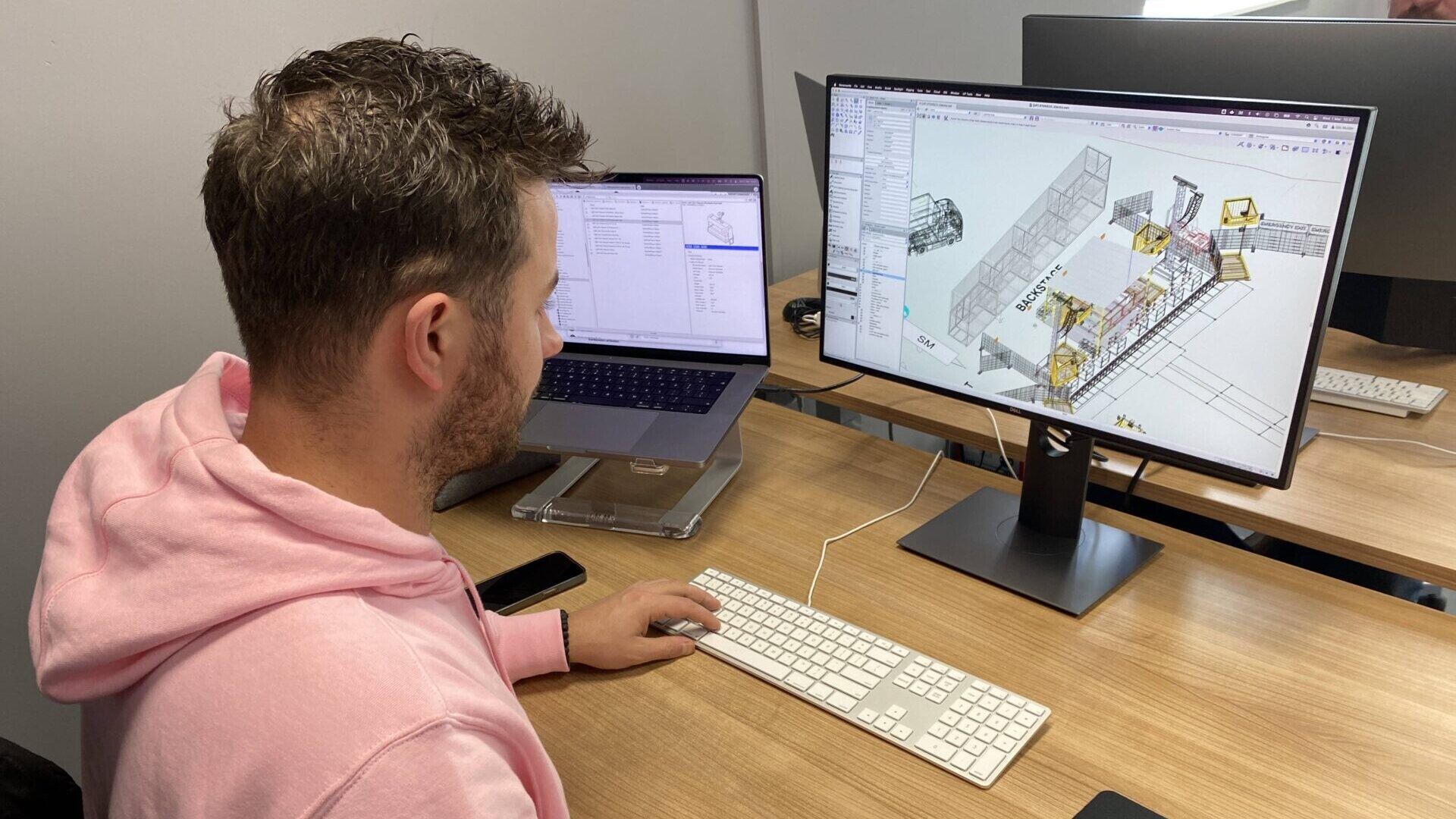
How important is a good drawing for your event?
The right drawing is evidently important for the foundation of your event. However, this is not always something event organizers think of at the beginning of the event production process. In order to take a closer look at this, we asked Gijs Mulder (CAD engineer at Unlimited Productions) a few questions:
Why is it important to have a good drawing for your event?
Ultimately, a good drawing of your event is the foundation of everything you will do. The translation of the concept phase to production is key. It ensures that everything has been thought about. From chairs to lighting plans, everything must be thought through.
Your client and suppliers want a drawing on which everything is clear. It is therefore up to us to collect all the information and then make a thorough plan. All materials can then also be calculated so that there is a correct drawing with also the right budget.
In addition, these drawings often go to all kinds of authorities for permits and insurance, for example, which makes it very important that everything is correct.
What does the working method look like? What do you start with and which phases do you go through?
Basically you always start from an idea, and we then transform this idea into a realistic plan. We do this through a 4 phase process. The first part happens in the definition phase. Here we discuss the how, what, where, and when of the client and process this into a clear briefing. After we have done this, we will work with our internal team so that we have a clear picture of everyone’s tasks. How much time this takes depends strongly on each project. Sometimes the design of the event has already been made, or it is completely clear what is needed. The design itself is either made by the client, or by an external company hired by the client, or us. These factors naturally affect the time we need to work something out. If we start from an empty piece of paper, you can imagine that this will take longer. We do this in the concept phase.
After an agreement has been made on how we want to produce an event, we will continue to the so-called pre-production phase. In this phase, the actual translation is made of the concept. Here we take into account planning, budget, and logistics so that this all matches.
When we are finished with the entire preparation, we will end up in the production phase. In the workplace things will always change. It is therefore up to us to keep track of these changes and to be able to apply this for a possible new edition. We keep track of this in different ways, this depends on the project. Consider, for example, 360-degree photos of the delivered product, notes and evaluations.
What is the difference in drawings for the different types of events (festivals, corporate events, public events, etc.)
Within the events industry you have to deal with many types of events. Each event has its own character with what needs to be done, but often needs the same things. We can divide this into two types of activities: site and technical. As an example we take a large public event, a major celebration of a football club. Not only the stage is important here, but also all road closures, public flows, power needs, and so on. In addition, a stage design will also have to be made, which has a much more technical side.
We often start with a sketch design. This design can be made by the client, or various companies that create designs or come up with entire concepts. It is up to us to transform this into materialization with items that are available to rent. If this is not the case, or if there is an item that is very specific (so it cannot be rented), we often develop it ourselves or with our partners.
What are the most common mistakes made when creating a drawing?
The most important thing is a good start. Without a clear assignment, it is difficult to come up with a good story. A common mistake is therefore to start too quickly, and put in many hours with no results.
What can you do to prevent this?
To prevent this from happening, good communication between you and the client, but also with your internal team, is very important. Making agreements when you deliver something in a so-called “roadmap” is a must have. Of course, things will unexpectedly change during the process, but a general planning with some milestones will help a lot.
What kind of programs do you use for CAD drawings?
At Unlimited Productions we use Vectorworks and Capture. Vectorworks offers us a very diverse package of possibilities. This allows us to make a clear 2D & 3D plan relatively to the size of an event. A business setup in a small ballroom can of course be realized faster than a big festival site with various areas.
Because we have also invested a lot in an extensive library with products from our suppliers, we can draw almost everything. Here we have immediately taken into account various workflows so that this works well for everyone.
In addition, we also have the necessary IT knowledge, which gives us the opportunity to develop our own tools that do not yet exist or are very focused on a specific question. These functionalities are primarily aimed at having everyone draw faster.
In addition to drawing events relatively quickly, we can also visualize this well. If we are asked to make actual show pictures, we use Capture. Thanks to an export function from Vectorworks, we can easily create a picture of what something will look like in real life.
Do you need help or more information for your drawings? Contact us at contact@unlimited-productions.com.